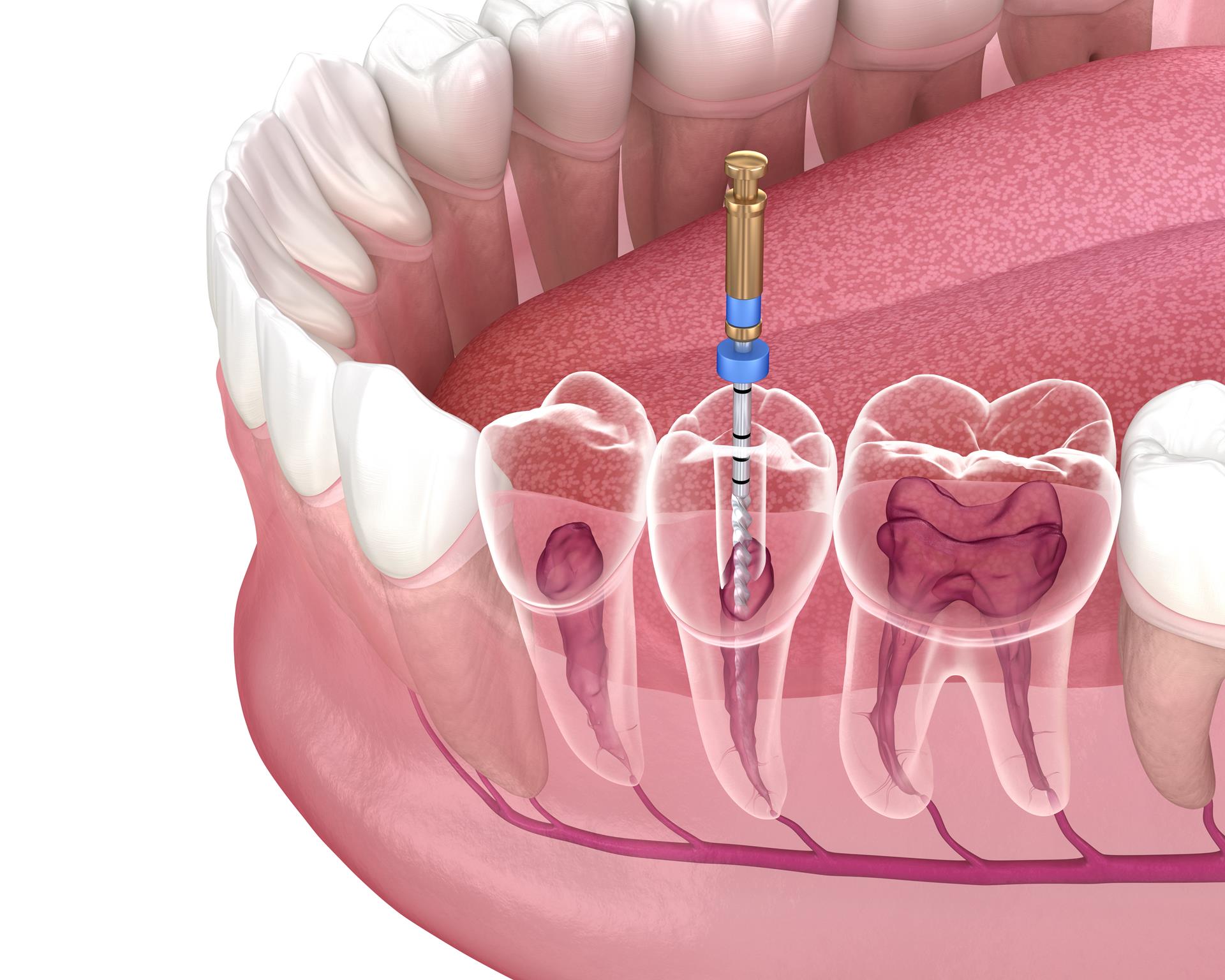
Root Canal (Endodontics)
Root canals are needed when decay and bacteria have spread within a tooth for too long without treatment. After a while, the infection will make its way into the pulp within your tooth which contains nerves that can cause a lot of pain if infected. Since the infection is happening within the tooth, you won’t necessarily see the damage, but instead will feel it or notice other signs such as bleeding, swelling, and bad breath.
If left untreated, you may lose a tooth or risk the infection spreading further into the body, which can result in more extensive treatment than a root canal would require.
After conducting a thorough examination and determining a root canal is the best treatment option, we will schedule your procedure. During the procedure we will remove the infected pulp which is no longer needed for the tooth to function properly. Next, we will clean the inside of the tooth and flush out any remaining pulp or bacteria. Afterward, we will fill and seal your tooth and place either a crown or filling onto your tooth to restore it. The treatment and number of visits can vary depending on the severity of your infection.
If you think you may have an infected tooth or are experiencing pain and other symptoms, schedule an appointment immediately for a diagnosis. Treatments are quicker, easier, and often more cost-effective if caught early on.
For more information on root canals or to schedule an appointment, please contact our office today at (816) 630-5713.

Retreatment
Here at Excelsior Springs Family Dentistry, we are dedicated to providing the best care for our patients.
With proper care, your endodontically treated tooth will last as long as your natural teeth. Yet, pain may continue to exist or a tooth may fail to heal. Sometimes pain may occur months or years after treatment. If so, you may need an endodontic retreatment.
Some situations that may result in new problems or improper healing are
- Complicated canals were not detected during initial treatment.
- Curved or narrow canals weren’t treated.
- The restoration was not placed within the appropriate amount of time following the procedure.
- The restoration did not prevent saliva from contaminating the inside of the tooth.
New problems such as decay or a cracked or loose-fitting crown can also expose the tooth to new infection.
Retreatment involves the doctor reopening the tooth to gain access to the root canal filling material. The restorative material will be removed. The doctors will clean your canals and examine the problematic tooth. Once cleaned, the doctor will fill and seal the canals and place a temporary filling in the tooth.
request an appointment
